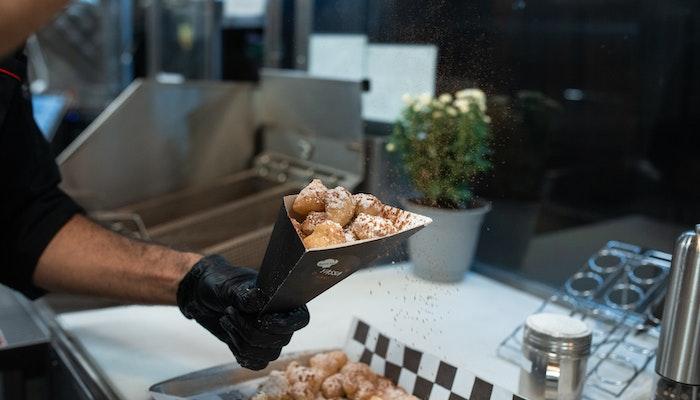New Year’s Eve, Hogmanay, Silvester. Call it what you want – the evening of December 31st sees the start of celebrations that last well into the morning of January 1st around the world.
This post may contain affiliate links. Please see our disclosure.

But exactly how you’ll be celebrating the transition from the old year to the new will depend very much on where you happen to be at the time. Here, we’ve put together some of the more intriguing New Year traditions around the world.
Interesting New Year’s Traditions Around The World
1. Eat 12 Grapes In Seconds – Spain
If you manage to eat twelve grapes while the church bells strike midnight on New Year’s Eve, you’ll be assured good luck and fortune for the coming year, at least according to popular tradition. This might seem like a simple way to guarantee prosperity, but trying to chew and swallow twelve grapes in less than a minute is not that easy.

This is further complicated by the fact that in smaller towns and villages across Spain, where the church clock was the only way to keep track of time for workers in the fields, the bell strikes the hour not once, but twice!
And confusion generally reigns as to which is really the top of the hour, so many people end up cramming 24 grapes into their mouths in the space of a couple of minutes.
2. Be Picky About Your “First Footer” – United Kingdom
There is much more to New Year’s Eve in Scotland and parts of Northern England.

One tradition that all three of the UK’s smaller constituent parts share is First Footing. The first person to come through your door in the New Year will set the tone for the following twelve months.
Of course, these things are better not left to chance, so dark-haired, good-looking men (as protection against Vikings) are in great demand at parties.
3. Eat Oliebollen To Ward Off A Germanic Goddess – The Netherlands
We’ll return to the food-related traditions for a moment with a quick trip to the Netherlands. Here, on New Year’s Eve and in the run-up, you’ll find small doughnut-like balls being sold by street vendors all over the country.
The origins of this Dutch New Year’s Eve traditional food are a bit bizarre, to say the least. The goddess Perchta, also known as the Belly Slitter, worshipped by the Ancient Germanic tribes who used to inhabit the region, was a big fan of Yule.
And if she felt that any of her followers hadn’t sufficiently partaken in yuletide cheer, she would slit their stomachs open and fill them with rubbish. The oliebollen protected you from this fate because, if you ate them in sufficient quantity, the fat from the dough would cause her sword to slide right off.
Today, oliebollen are enjoyed on New Year’s Eve, and the good news is, the animal fat they were originally fried in has now been replaced by vegetable oil.
So if you’re in the Netherlands, you’ll be able to partake in this delicious New Year’s treat.
4. Throw White Flowers Into The Ocean – Brazil
We’ll go now to Brazil, on the other side of the world, where the weather is much balmier on New Year’s Eve.

Here, locals take a trip to the beach to place candles in the sand and throw white flowers into the ocean. This is done as offerings to the goddess Yemoja, who controls the seas and will grant her blessing for the year to come to all those who honor her.
5. Wear Red Underwear – Italy
In Italy, red underwear is a big thing on New Year’s Eve. Both men and women wear red underwear to bring good luck and prosperity for the coming year. And giving a gift of a pair, new, of course, signifies that you wish the recipient great good fortune.
The origins of this custom are often ascribed to red’s association with passion and, therefore, fertility. But they’re a bit more complicated and interesting than that.
The color red was traditionally believed to repel negative energy, and the Catholic Church subsumed the superstition by adding that it invoked the protective presence of the Archangel Michael. This led to men in the middle ages draping their groins with red handkerchiefs to protect their manhood from the witches who would roam the streets at midnight looking for some fun!
6. Throw Old Plates At Your Neighbor – Denmark
Visitors to Denmark are always struck by what a well-ordered, tidy country it is and how relaxed, friendly, and easy-going the people are. So it may come as a surprise to those not familiar with the local New Year’s traditions to see hordes of Danes roaming the streets hurling cups, plates, and bowls at each other’s front doors.

And equally surprising is the fact that the next day, the bigger the pile of broken crockery outside a house, the happier the inhabitants are. Apparently, throwing plates at the doors of your friends and neighbors is a way of wishing them luck. And is also a great release for any pent-up aggression that has accumulated over the previous year.
7. Burn Scarecrows That Look Eerily Familiar – Ecuador
The inhabitants of this small South American country also use New Year’s Eve as an excuse to release their frustrations. But in a more creative way.

They spend the run-up to the New Year creating elaborate effigies of politicians, pop icons, and any other public figure who has annoyed them in the previous twelve months.
Then, on the 31st, the effigies are paraded through the streets before being burnt on bonfires while the people party.
8. Smash Some Pomegranates – Greece
One of the many traditions to celebrate New Year’s Eve in Greece is smashing pomegranates. And no, this doesn’t mean that everybody sits around listening to a 90s indie rock band.

The pomegranate fruit is associated with luck and fertility, so when the bell strikes midnight, it’s customary for Greeks to smash a pomegranate against the door of their home. The more seeds that fall out, the more luck will bless the house in the coming year.
9. Ring The Bells – Japan
If you’re in Japan, be prepared for some serious bell ringing. Every Buddhist temple in the country (around 180,000 at last count) will ring its bell 108 times at the turn of the year. This tradition, known as Joya-no-Kane, is to banish the 108 evil desires that the holy Buddha identified as living inside each and every one of us and cleanse our souls of the previous year’s sins.

Of course, every country and region has its own special traditions, and there are a lot more we could describe. Unfortunately, we don’t have space to go into all of them here. But wherever you are, we hope you enjoy your New Year’s celebrations and holidays.
- 9 Weird Things To Do In Dublin, Ireland - April 13, 2024
- 14 Weird Things To Do In Indianapolis, Indiana - April 13, 2024
- Bird Tourism: Getting Started - February 29, 2024





